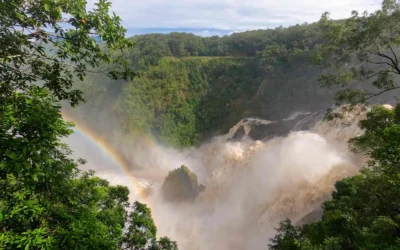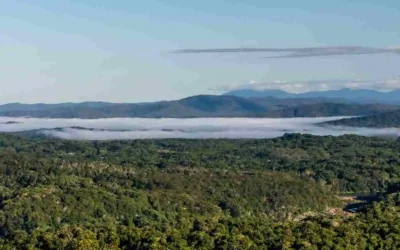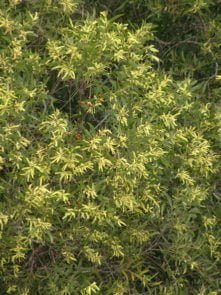
Ecological Succession Explained
Ecological succession is a phenomenon which occurs after a disturbance in the rainforest. Disturbance’s can take on many forms in the Wet Tropics, with cyclones being the most common and being a major contributor to the start of ecological succession. Occasionally, fires clear large areas of vegetation and were previously most commonly started by humans. Lightning can also start fires in the rainforest, but this is more likely further west where rainforest is scarce. Rainforest simply doesn’t burn easily and is not well adapted to handle regular fire.
Logging and clearing of land for farms and housing are by far the most common causes of disturbance of the local rainforests. Amazingly, if left alone, rainforests are incredibly resilient and are known to replace sclerophyll forest in appropriate areas. The main problem tends to be introduced weeds, especially noxious vines like Rubber Vine. After an area has been cleared by whatever means, plants start turning up to fill the gaps. The first wave of plants are the pioneers, fast growing plants with short life cycles that produce what almost comes across as excessive amounts of seeds. The reason for this is obvious. By producing enormous amounts of seeds the plants ensure that at least a tiny number of their offspring survive. Each seed generally has very little in the way of stored food. Slower growing plants soon start growing in between the pioneers. Several waves of pioneers come and go and the slow growing ones patiently grow toward the new canopy. Soon vines start cluttering up everything, a sure sign there has been disturbance in the area. Once the climax species have reached their optimum height above the pioneers the latter start dying off due to lack of sufficient light and the vines start thinning out for the same reason. Finally the epiphytes start moving in and the canopy starts developing layers. All this can take decades and even centuries depending on the local conditions and the available plant replacements.
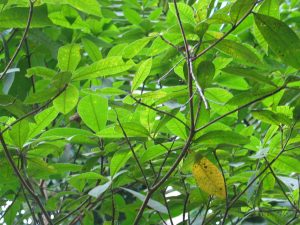
Pioneers are as mentioned fast growing and short lived, a condition known as r-strategy life cycle. There are several diagnostic species in the Wet Tropics. Three species of wattle are often the first trees to invade newly cleared areas. They are quickly followed by Hard Milkwood, Blue Quandong, Scrub Turpentine, Whitfield Ash, Celerywood, Candlenuts, Buttonwoods and Siris. There are several other less obvious pioneers than these that don’t grow as tall. Typical of all these trees are short lives, fast growth on rainforest edges in full sunlight, hardly any branching, flat canopies, only rarely taller than 20 metres and flower or fruit regularly. A pioneer’s job is to quickly fill up a clear area and bind up the shallow soil before it washes away. Pioneers are ill suited to long term maintenance of the rainforest.
Allrounders are trees that often grow in disturbed forests that have at least some canopy. They don’t grow as fast as the true pioneers but are definitely faster than the climax trees. You can think of them as consolidators that establish themselves in forests that are prone to natural disturbance. They often survive cyclones after having all their leaves stripped, flowering shortly after. They have larger trunks than the pioneers and more complex branching patterns. Examples of these trees are Ashes and Silkwoods, Red Cedar, Ebonies, Mahoganies, Sassafras, Synima and Silky Oaks.
Vines and shrubs tend to start turning up once a certain degree of shade on the forest floor has been achieved. In the early stages, vines and shrubs literally clog up the forest floor and you get what is often referred to in Hollywood as impenetrable jungle. What this tells you is there is still enough light to support a lot of growth on the forest floor. Classic shrubs in this stage of the ecological succession are Lasiandras and Strawberries, Native Olive, Yellow Aspen, Thorny Yellowwoods and Glossy Tamarind. Typical vines are the pesky Wait-a-whiles, Mother-in-law Vine, Melodorum, Bellbird Vine, Hypserpa Vine and Dichapetalum.
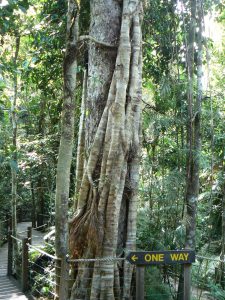
Climax species, epiphytes and parasites are the final stages of the rainforest. This stage is best known in Daintree and Iron Range. The trees here are slow growing trees often referred to as Oscars due to their long periods of not growing until conditions are ideal. Some, like Strangler Figs, grow on other trees before killing them. Epiphytes are plants that grow on other trees without hurting them and with roots that don’t reach the ground. Epiphytes often have succulent leaves due to long periods they have no access to water. Many, like the Orchids, have special adaptations that allow them to collect and store carbon dioxide during the night.
Parasites are organisms that take something from another organism without giving anything in return, like Mistletoes. It’s not in a parasite’s interest to kill its host as it would then be deprived of its main source of food. As an example it has been shown that a forest containing many mistletoes is generally a very healthy rainforest.
Australian Rainforest Facts supplied by Skyrail Ranger Tore Lien Linde

